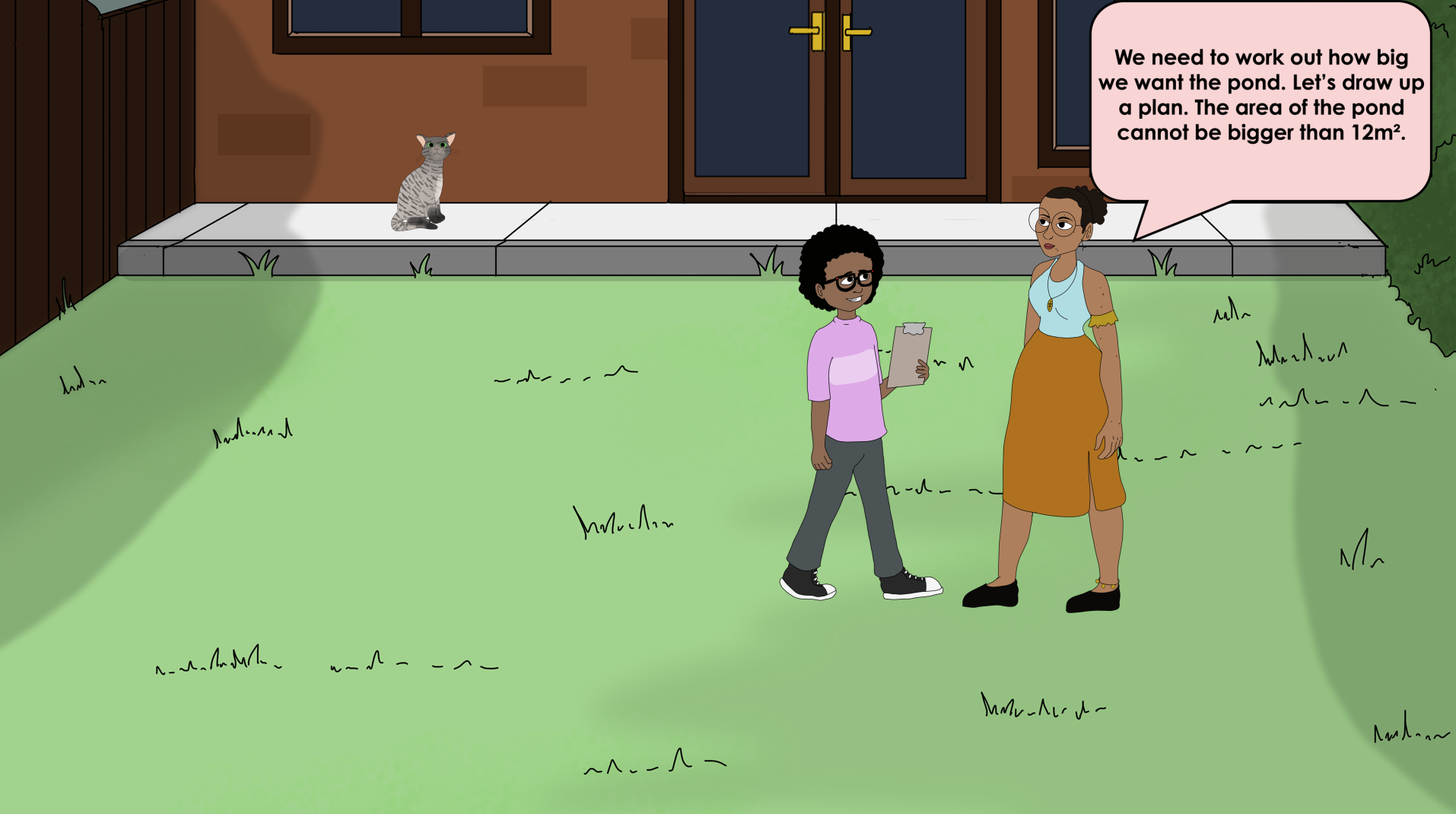Area of Compound Shapes Year 5 Perimeter and Area Learning Video Clip

Step 5: Area of Compound Shapes Year 5 Perimeter and Area Learning Video Clip
Alfie’s new house is almost finished. He has asked for a pond in the garden but needs help to work out how big it should be using strategies to estimate the area of irregular shapes.
More resources for Autumn Block 5 Step 5.
Not a member? Sign up here.
Discussion points for teachers
1. Do you agree? Explain your answer.
Discuss how to apply knowledge of calculating area of rectilinear shapes to estimating the area of irregular shapes, as well as using existing knowledge about fractions of shapes. Discuss how to combine fractions of part-covered shapes.
Alfie is partly correct as he needs count the whole squares to begin estimating the area. The total number of whole squares needs to be added to the combined total of part-covered squares.
2. Estimate the area of the pond design. Is this design a possible option?
Discuss how to apply the strategies discussed in question 1 by first identifying the whole squares and then combining the remaining part-covered squares.
The estimated area is 20m² (11 whole squares = 11m²; part-covered squares give an estimated total of 9m²). This is not a possible option as it is larger than the 12m² limit set by Auntie Sharon.
3. Each square on the grid represents 4m². Create 3 pond designs that would meet Uncle Paul’s criteria.
Discuss the difference in scale and how this will affect the designs. Discuss how the estimated area will now be calculated with particular attention to part-covered squares and their estimated area.
Various answers, for example: This design has an estimated area of 20m² (2 whole squares = 8m²; part-covered squares give an estimated total of 12m²).

4. Estimate the combined area of the pond and the path.
Discuss which parts of the image to use to estimate the area, that for the combined area we need to look at the outside edge of the path.
28m² (17 whole squares = 17m², part-covered squares give an estimated total of 11m²).
5. Estimate the area of the path alone.
Discuss strategies for calculating the area of compound shapes and how to apply this to estimating the area of the path. Discuss whether different approaches to this problem have the same result.
Various approaches, for example: Subtract the area of the pond (6 whole squares = 6m²; part-covered squares give a total of 7m². Area of pond = 13m²) from the combined area of the pond and path. 28m² – 13m² = 15m².
6. If one bag of gravel will cover 0.5m², how many bags of gravel will Uncle Paul, Auntie Sharon and Alfie need to buy to cover the whole path?
Discuss how many bags of gravel are needed to cover 1m² and how this information can be used to calculate the answer.
2 x 0.5m² = 1m², so for every 1m², 2 bags of gravel are needed. 2 x 15 = 30 bags of gravel required.
National Curriculum Objectives
Mathematics Year 5: (5M7b) Calculate and compare the area of rectangles (including squares), and including using standard units, square centimetres (cm2) and square metres (m2) and estimate the area of irregular shapes
This resource is available to play with a Premium subscription.





